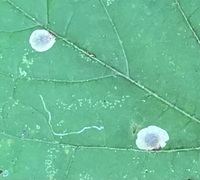
| Recorded by: Ken Kneidel on 2024-06-02
Mecklenburg Co.
Comment: | 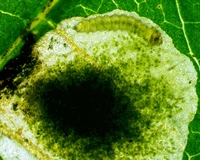
| Recorded by: Ken Kneidel on 2024-06-02
Mecklenburg Co.
Comment: |
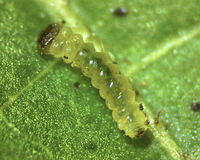
| Recorded by: Ken Kneidel on 2024-06-02
Mecklenburg Co.
Comment: | 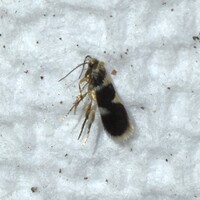
| Recorded by: Jeff Niznik on 2023-08-31
Orange Co.
Comment: A reared adult from a larva that was found on 2023-08-31 (see companion photos). |
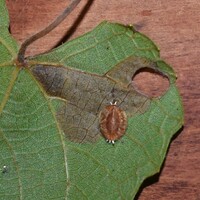
| Recorded by: Jeff Niznik on 2023-08-31
Orange Co.
Comment: Larva was found Aug 31 on Vitis labrusca; pupated Sept 8th. ID of A. isabella based on large (just over 5 mm) round pupal chamber with ridge as seen here, and lack of a linear portion to the mine. Adult emerged early April, but I missed it so no exact date. | 
| Recorded by: Jeff Niznik on 2023-08-31
Orange Co.
Comment: Larva was found Aug 31 on Vitis labrusca; pupated Sept 8th. ID of A. isabella based on large (just over 5 mm) round pupal chamber with ridge as seen here, and lack of a linear portion to the mine. Adult emerged early April, but I missed it so no exact date. |

| Recorded by: Jim Petranka on 2023-04-26
Rutherford Co.
Comment: | 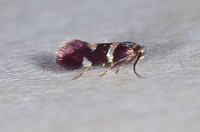
| Recorded by: Jim Petranka on 2023-04-26
Rutherford Co.
Comment: Leaf mines were in a Vitis sp.; pupal case was ca. 5.0 mm and had a conspicuous ridge; adult emerged ca. 2 months after being removed from refrigerator; antennae solid black (no white tip). |
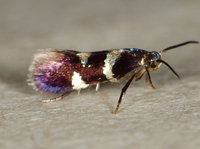
| Recorded by: Jim Petranka on 2023-04-14
Buncombe Co.
Comment: Adult was reared from a Vitis mine; emerged on April 14, 2023 after overwintering in refrigerator (see companion photo of the mine from 2022-09-08). | 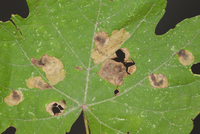
| Recorded by: Jim Petranka on 2022-09-13
Rutherford Co.
Comment: Leaf mines were in a Vitis sp.; pupal case was ca. 5.0 mm and had a conspicuous ridge; adult emerged ca. 2 months after being removed from refrigerator; antennae solid black (no white tip). |

| Recorded by: Jim Petranka on 2022-09-13
Rutherford Co.
Comment: Leaf mines were in a Vitis sp.; pupal case was ca. 5.0 mm and had a conspicuous ridge; adult emerged ca. 2 months after being removed from refrigerator; antennae solid black (no white tip). | 
| Recorded by: Jim Petranka on 2022-09-13
Rutherford Co.
Comment: Leaf mines were in a Vitis sp.; pupal case was ca. 5.0 mm and had a conspicuous ridge; adult emerged ca. 2 months after being removed from refrigerator; antennae solid black (no white tip). |
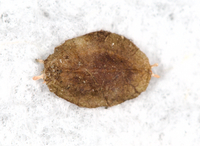
| Recorded by: Jim Petranka on 2022-09-13
Rutherford Co.
Comment: Occupied leaf mines were in a Vitis sp.; pupal case was ca. 5.0 mm and had a conspicuous ridge; adult emerged ca. 2 months after being removed from refrigerator; antennae solid black (no white tip). | 
| Recorded by: Jim Petranka on 2022-09-08
Buncombe Co.
Comment: |

| Recorded by: Jim Petranka on 2022-09-08
Buncombe Co.
Comment: | 
| Recorded by: Jim Petranka on 2022-09-08
Buncombe Co.
Comment: |
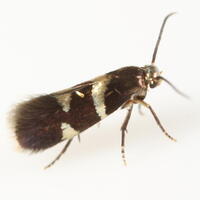
| Recorded by: Tracy S Feldman on 2020-07-24
Durham Co.
Comment: | 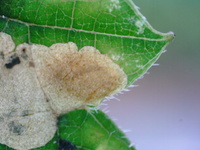
| Recorded by: Tracy S Feldman on 2020-07-24
Durham Co.
Comment: |
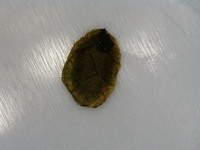
| Recorded by: Tracy S Feldman on 2020-07-24
Durham Co.
Comment: |

 »
»




 »
»


